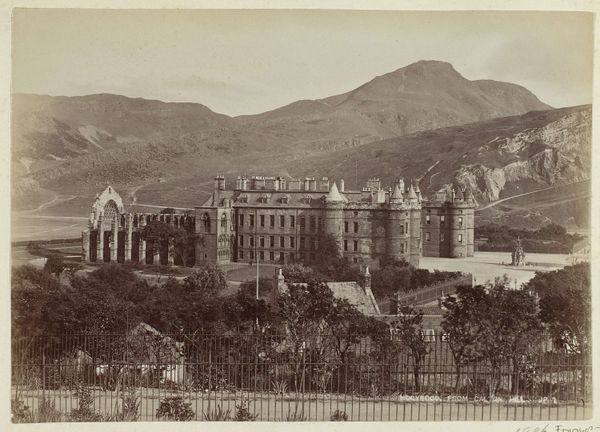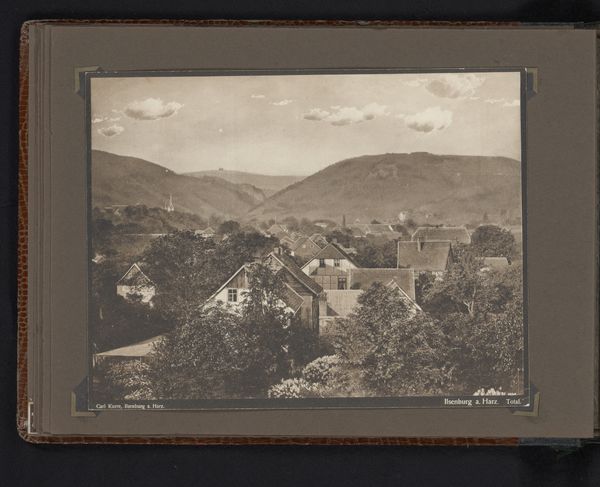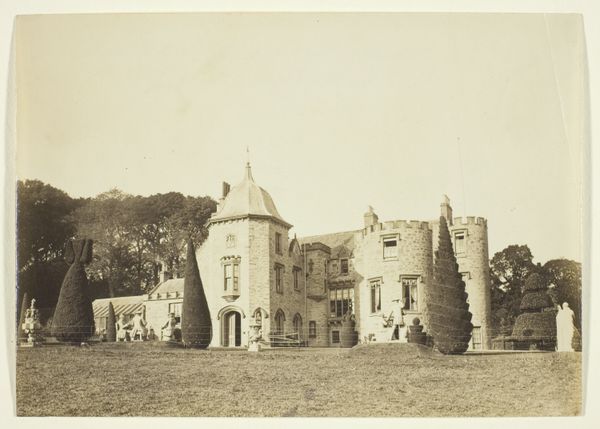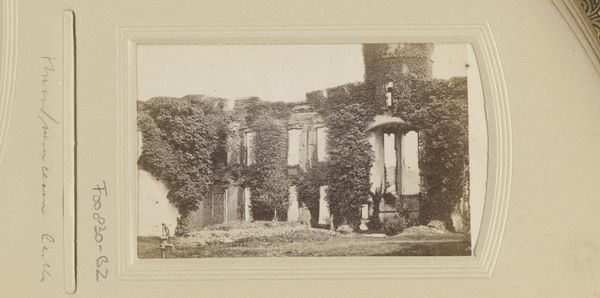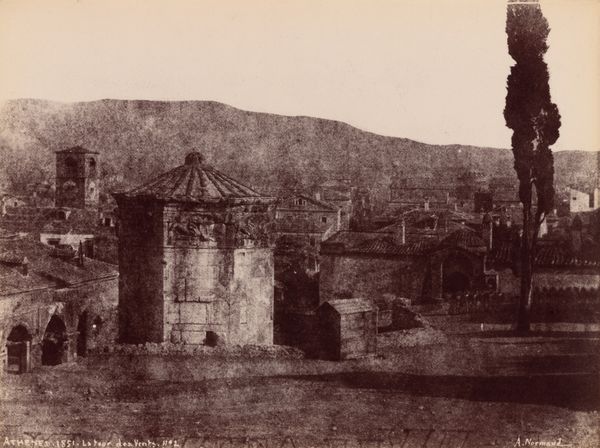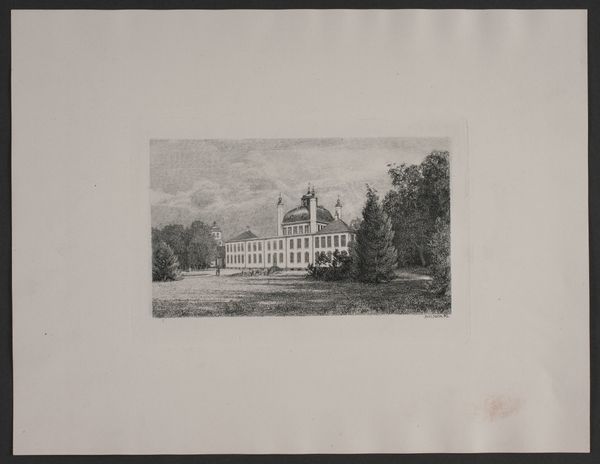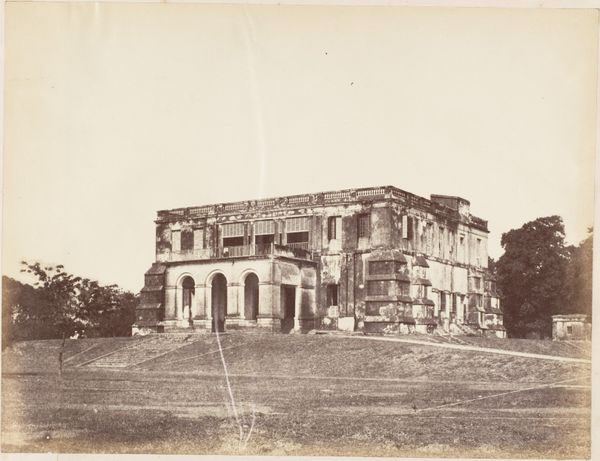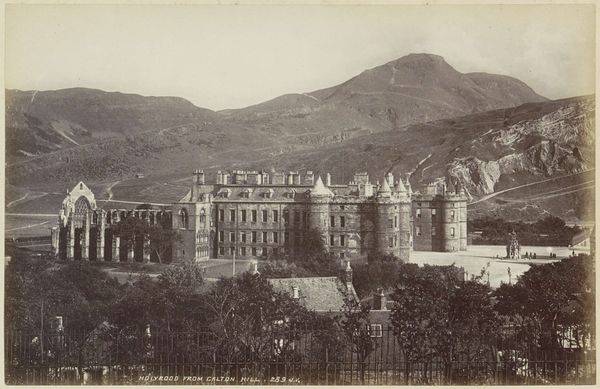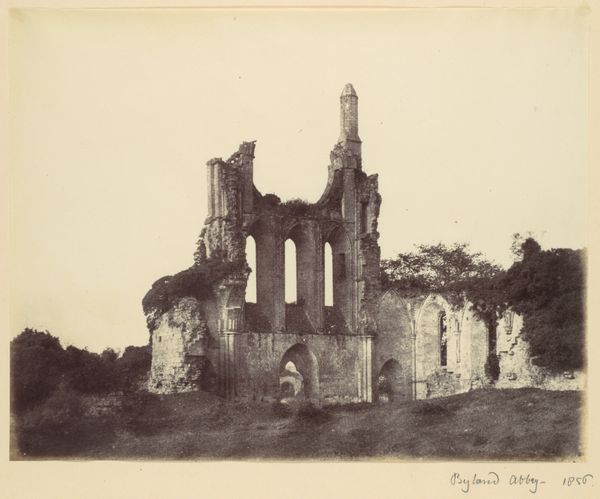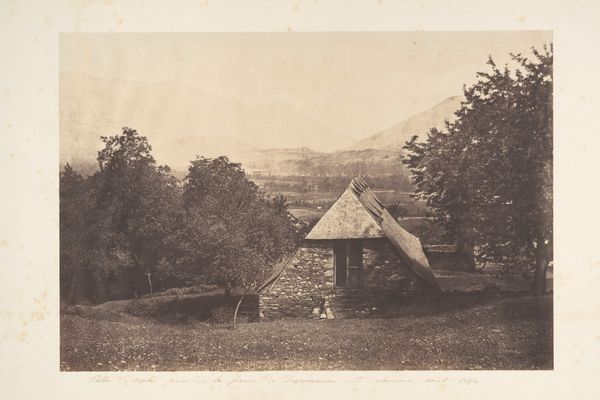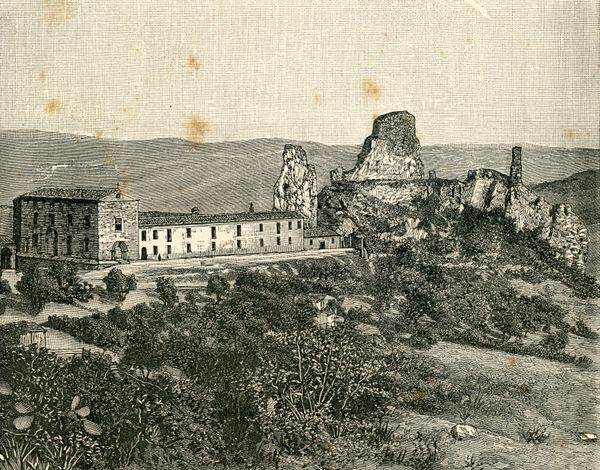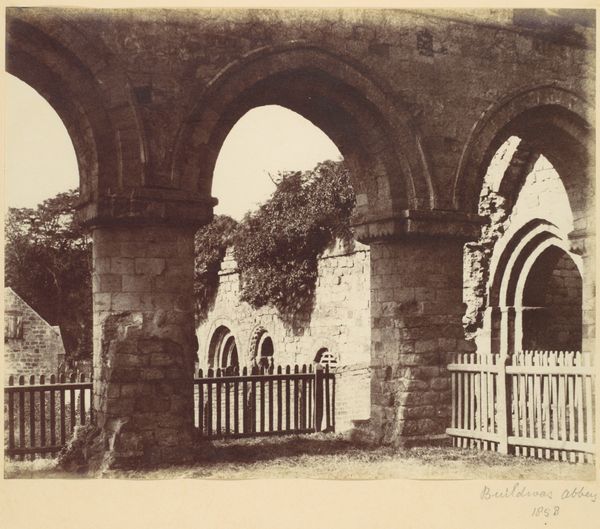
Dimensions: 15.6 × 21.5 cm (image); 16.1 × 21.9 cm (paper)
Copyright: Public Domain
Curator: Looking at this print of Tintern Abbey by Francis Bedford, made sometime between 1860 and 1894, what immediately comes to mind for you? Editor: It's evocative, almost ghostly. The ruins stand proud, yet they're clearly surrendering to nature. A very romantic image. Curator: Indeed. Bedford, a prominent photographer of his time, skillfully captured this medieval ruin within a landscape. He used the albumen print method, lending this photograph a sepia tonality. Editor: That tone definitely adds to its atmosphere. The Abbey is placed within a wider cultural context: think of Romantic poets like Wordsworth who were drawn to such landscapes and ruins as emblems of a bygone era. The picture’s appeal is enhanced by that literary association. Curator: Precisely. The ruins themselves speak volumes, beyond aesthetics. Tintern Abbey was dissolved in 1536 during Henry VIII’s Dissolution of the Monasteries. This was a turning point, shifting the religious and social landscape of England forever. What meanings and symbolism are evident to you? Editor: Decay, inevitably. But I also see resilience. Even in ruin, the Abbey retains its imposing presence, a symbol of the Church's enduring impact even after its physical dismantling by the state. The climbing plants seem to want to cover up the loss that this once-active place of worship signifies. It seems that they have, since time itself, almost reverentially adorned what’s left of it. Curator: That is something that should be pondered on further. I think this piece helps us consider how architectural photography of ruins not only preserves historical imagery, but it actively participates in creating our understanding of history. We’re witnessing Bedford's 19th-century lens shaping our present perceptions of medieval history, as we can feel the echoes of its sociopolitical past, reverberating within us. Editor: Absolutely, photography does more than merely record, doesn't it? This image encapsulates so much of our understanding of romanticism and even social power dynamics of British history.
Comments
No comments
Be the first to comment and join the conversation on the ultimate creative platform.
